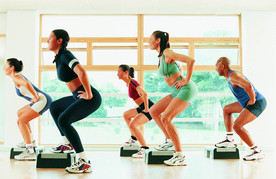How to Avoid Injuries While Running for Fitness
Running can be a safe, sustainable way to build fitness when attention is paid to simple details of technique, footwear, and progression. Many overuse problems begin not with a single mistake but with small mismatches between form, strength, and training load that accumulate over time. By approaching running with a calm, health‑first mindset and a few practical adjustments, most people can reduce the likelihood of ankle and knee troubles and keep the routine enjoyable.
Ankles are often the first area to complain when runners start or increase mileage. Weakness in the muscles that support the ankle and foot, combined with landing that is too far in front of the body, can lead to discomfort or sprain. Recreational runners commonly contact the ground at the heel, especially at easy paces; this is not inherently wrong, but it does place greater demand on cushioning and can increase rubbing and irritation at the back of the shoe if fit is poor. Choosing running shoes with adequate heel cushioning and a secure, comfortable fit helps disperse impact and reduce friction. Over time, as rhythm improves and steps land closer beneath the hips, many runners naturally settle into a softer contact that spreads load across the whole foot. The goal is not to force a specific foot‑strike pattern but to make contact quietly and near the body’s center of mass so forces travel cleanly through the joints.
Technique should feel simple and individualized. An upright posture with a relaxed gaze, easy shoulders, and a slight forward inclination from the ankles helps the body move efficiently. Let the arms swing comfortably at the sides and keep the hands relaxed to avoid unnecessary tension. Think of the leg swinging forward and back in line with travel, with the knee lifting just enough for the chosen pace. Short, light steps that avoid overstriding typically reduce braking forces and make running feel smoother. If breathing becomes ragged or form starts to tighten, ease the pace until rhythm returns; durable habits are built on repeatable efforts, not on forcing speed.
Knees carry more load than ankles during running and are therefore more susceptible to irritation if training exceeds the body’s current capacity. People with higher body weight, prior knee discomfort, or prolonged inactivity may be better served by brisk walking as a starting point to protect the joints while still gaining cardiovascular benefit. Walking is not a compromise; sustained brisk walking of an hour or more can meaningfully raise energy expenditure, support fat loss when combined with appropriate nutrition, and improve overall fitness. As comfort and strength grow, a gradual transition to short jog intervals between walking segments allows the knees to adapt to the different loading of running without undue stress.
Progression is the quiet protector against injury. Increasing time or distance in small, steady steps allows tendons, bones, and muscles to remodel in step with demand. Begin runs with a few minutes of easy movement to raise temperature and prepare joints, and end with a gentle cool‑down to let heart rate and breathing settle. Surfaces that feel stable and shoes that match your foot shape and stride reduce unnecessary strain. Hydration according to thirst and attention to recovery—sleep, nutrition, and easy days—help convert training into adaptation. These simple practices, repeated over weeks, do more to prevent injury than any single cue about form.
Strength and balance around the ankle, knee, and hip complement running and make it more resilient. Gentle calf and foot strengthening, as well as hip stability work, improve control at foot strike and help keep the leg tracking comfortably beneath the body. Mobility that allows the ankle to flex, the hip to extend, and the trunk to remain steady supports smoother strides. This work need not be elaborate; small amounts performed consistently can translate into noticeable comfort on the run.
Listening to the body is part of staying healthy. Discomfort that is sharp, increases with each step, or alters your gait is a signal to stop and reassess rather than to push through. Chest pain, unusual breathlessness, dizziness, or swelling warrant professional evaluation. With clear medical guidance, many individuals with chronic conditions can tailor running or brisk walking to their needs and safely enjoy the health benefits of regular activity.
Running technique remains straightforward when framed around comfort and control. Wear shoes that cushion and fit the heel well, let the foot meet the ground quietly near the hips, keep posture relaxed, and build distance gradually. If current body weight or joint history makes running uncomfortable, prioritize brisk walking until confidence and strength return; its benefits for energy balance, metabolic health, and overall function are substantial. By favoring form that suits your body today and progression that respects your current capacity, you create conditions for long‑term consistency, fewer setbacks, and a stronger, more enjoyable practice.







